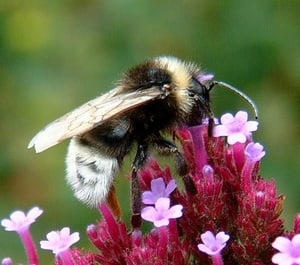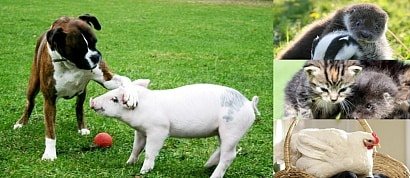A list of my favorite images of bumble bees.
en.wikipedia.org/wiki/Bumblebee
A bumble bee, also written bumblebee, is a member of the bee genus Bombus, in the family Apidae.
The brood parasitic or cuckoo bumblebees have sometimes been classified as a subgenus or genus, Psithyrus, but are now usually treated as members of Bombus. This genus is the only extant group in the tribe Bombini, though a few extinct related genera (e.g. Calyptapis) are known from fossils.
Over 250 species of bumblebee are known. They are found primarily in higher altitudes or latitudes in the Northern Hemisphere, although they are also found in South America where a few lowland tropical species have been identified. European bumblebees have also been introduced to New Zealand and Tasmania.
Bumblebees are social insects which form colonies with a single queen. Colonies are smaller than those of honeybees, growing to as few as 50 individuals in a nest. Female bumblebees can sting repeatedly but generally ignore humans and other animals.
Cuckoo bumblebees do not make nests; their queens aggressively invade the nests of other bumblebee species, kill the resident queens and then lay their own eggs which are cared for by the resident workers.
Bumblebees have round bodies covered in soft hair (long, branched setae), called pile, making them appear and feel fuzzy. They have aposematic (warning) coloration, often consisting of contrasting bands of colour, and different species of bumblebee in a region often resemble each other in mutually protective Müllerian mimicry.
Harmless insects such as hoverflies often derive protection from resembling bumblebees, in Batesian mimicry, and may be confused with them.
Nest-making bumblebees can be distinguished from similarly large, fuzzy cuckoo bees by the form of the female hind leg. In nesting bumblebees, it is modified to form a pollen basket, a bare shiny area surrounded by a fringe of hairs used to transport pollen, whereas in cuckoo bees, the hind leg is hairy all round, and pollen grains are wedged among the hairs for transport.
Like their relatives the honeybees, bumblebees feed on nectar, using their long hairy tongues to lap up the liquid; the proboscis is folded under the head during flight. Bumblebees gather nectar to add to the stores in the nest, and pollen to feed their young.
They forage using colour and spatial relationships to identify flowers to feed from. Some bumblebees rob nectar, making a hole near the base of a flower to access the nectar while avoiding pollen transfer.
Bumblebees are important agricultural pollinators, so their decline in Europe, North America, and Asia is a cause for concern. The decline has been caused by habitat loss, the mechanisation of agriculture and pesticides.
Added to
11 votes
My Insect Species Collection
(9 lists)list by kathy
Published 6 years, 10 months ago  1 comment
1 comment
 1 comment
1 commentPeople who voted for this also voted for
Bands of Boston
Pictures Posted by Kandi XIV
James Whitmore Partial Filmography
Basil Rathbone's Sherlock Holmes
Esther Williams' Magazine Covers_2
Marlon Brando Was Mentioned In...
"Scopitone"'s Shorts_3
Contessa di Castiglione
Cyd Charisse In Company_2
Tina Pica's Comedies
Film Diary of 2023
Judith Anderson Great Movies
When I was 32... music diary, Nov/Dec 2015
Priscilla Lane Best Movies
Kathleen Turner - Movies Viewed
More lists from kathy
Favorite Images of Moths
Favorite Paintings of Monkeys
Favorite Images of Montgomery Clift
Favorite Images of Furry Friends #9
Cate Blanchett Films Viewed by Kathy
Favorite Images of Polar Bears #1
Favorite Journalism Films
 Login
Login

















































